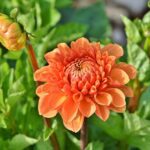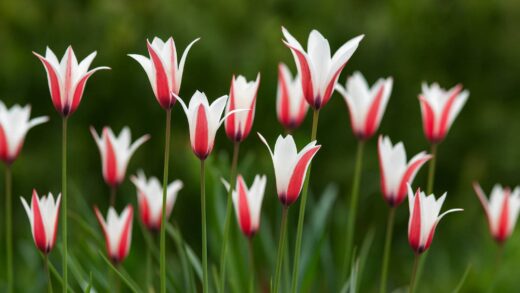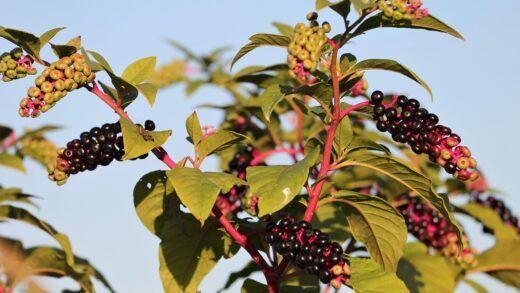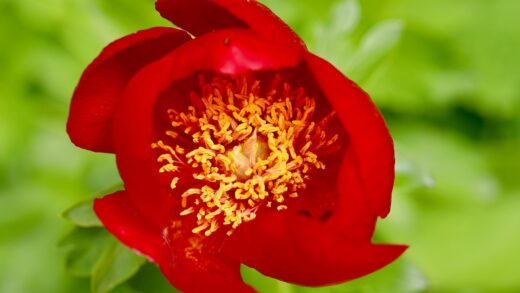The topic of pruning lily of the valley is a simple one, as this is a plant that requires very little in the way of cutting or trimming. Its natural growth habit as a low-lying, spreading groundcover does not necessitate the kind of shaping or structural pruning that shrubs and trees do. The “pruning” tasks associated with this plant are more accurately described as basic sanitation and cleanup, designed to maintain the health and appearance of the colony. Understanding what to cut, when to cut it, and, most importantly, what not to cut is key to its ongoing care.
The most significant aspect of managing lily of the valley’s foliage revolves around its natural life cycle. The leaves that emerge in the spring are the plant’s sole engine for producing and storing energy for the following year. Therefore, the cardinal rule is to never cut back healthy, green foliage during the growing season. Doing so would severely weaken the plant, diminish its ability to spread, and drastically reduce the quantity of flowers in subsequent years.
The primary cutting tasks involve removing spent flower stalks for aesthetic reasons and clearing away the dead foliage in the autumn after the plant has entered dormancy. These are not demanding chores but are important steps in good garden hygiene. They help to keep the plant patch looking tidy and can reduce the chances of diseases and pests overwintering in the garden bed.
Beyond these basic cleanup tasks, any other cutting is typically related to controlling the plant’s spread. As a rhizomatous plant, lily of the valley can be an aggressive spreader in ideal conditions. Pruning in this context means physically containing the patch by digging out and removing rhizomes from areas where they are not wanted. This is a form of root pruning that is essential for managing its vigorous nature in a mixed garden bed.
The philosophy of minimal intervention
When it comes to pruning lily of the valley, the guiding philosophy should always be one of minimal intervention. This is not a plant that benefits from regular trimming or shearing. Its beauty lies in its natural, untamed form as it creates a lush carpet of arching leaves. Any attempt to “shape” the plant by cutting its foliage would be both counterproductive to its health and detrimental to its aesthetic appeal. The leaves are integral to the plant’s energy cycle, and their form is part of its charm.
More articles on this topic
The plant has a self-regulating growth habit. Each spring, it sends up a predetermined number of leaves and flower stalks from its underground pips. Throughout the season, these leaves work to create energy, and then in the autumn, they naturally die back to the ground as the plant enters dormancy. This entire cycle proceeds perfectly without any need for human intervention in the form of cutting or pruning. The gardener’s role is to facilitate this natural process, not to interfere with it.
Therefore, the mindset should shift away from the active “pruning” required for many other garden plants. Instead, think of it as seasonal “tidying.” The tasks are few and are timed to coincide with the end of specific phases in the plant’s life cycle, such as after flowering has finished or after the foliage has completely died back for the winter. This patient and observant approach respects the plant’s natural rhythms.
Embracing this hands-off philosophy means you can spend less time on maintenance and more time enjoying the simple elegance of the plant. It is a reminder that sometimes the best gardening is about knowing when to leave things alone and let nature take its course. For lily of the valley, restraint is the most effective tool in the gardener’s kit.
Post-flowering cleanup
After the wonderfully fragrant, bell-shaped flowers of the lily of the valley have faded in late spring, you are left with the green flower stalks. While leaving them on the plant will do no harm, many gardeners choose to remove them for aesthetic reasons and to redirect the plant’s energy. If the flowers were successfully pollinated, they will begin to develop small, red berries. While these berries can be visually interesting, they are also highly toxic, and removing them can be a wise precaution in gardens with children or pets.
More articles on this topic
The process of removing the spent flower stalks is often referred to as deadheading. Using a pair of small, sharp scissors or pruning snips, you can cut the entire flower stalk off at its base, where it emerges from the soil. Be very careful during this process not to accidentally cut or damage any of the nearby leaves, as these are vital for the plant’s health for the rest of the season.
This post-flowering cleanup is an entirely optional task. In a more naturalized or woodland garden setting, many people choose to leave the stalks in place and allow the red berries to form, as they can provide a secondary season of visual interest. The amount of energy the plant expends on producing these small berries is minimal and is unlikely to have a significant impact on the plant’s overall vigor.
The most important takeaway from this stage is what not to do. Under no circumstances should you cut back the green foliage along with the flower stalks. The leaves must be left intact to continue their work of photosynthesis throughout the summer months. The only part of the plant that should be considered for removal at this time is the flower stalk itself, after the blossoms have withered.
Managing foliage through the season
Throughout the summer and into the early autumn, the primary role of the gardener is to protect and preserve the lily of the valley’s foliage. These green leaves are the powerhouses of the plant, capturing sunlight and converting it into the chemical energy that is stored in the underground rhizomes. This stored energy is what will determine the success of the plant in the following year. Therefore, the rule is simple: do not prune or cut the leaves while they are green.
During the growing season, you may occasionally notice a leaf that has been physically damaged by weather or has developed a fungal spot. It is perfectly acceptable to remove individual damaged or diseased leaves. Use clean scissors or snips to cut the single leaf stem back to the ground. This can help to improve the overall appearance of the patch and, in the case of a diseased leaf, can help to prevent the problem from spreading.
It is crucial to differentiate between removing a few select damaged leaves and cutting back the entire plant. Shearing the top of the foliage to “tidy it up” or cutting it back because it is starting to look a little tired in late summer would be highly detrimental. You must resist this temptation and allow the leaves to remain in place for as long as they are photosynthetically active.
The health and appearance of the foliage during the summer are a good indicator of the plant’s overall well-being. If the leaves are lush and green, it is a sign that the plant is happy and has adequate moisture and appropriate light. If the leaves are yellowing, scorched, or wilting, it is a sign of environmental stress that needs to be addressed, not a problem to be solved with pruning shears.
The autumn cut-back
The only time it is appropriate to cut back all of the foliage of lily of the valley is in the late autumn, after the plant has completed its natural cycle of senescence and entered full dormancy. You will know it is the right time when all of the leaves have turned yellow, then brown, and have withered completely. This is a clear signal that the plant has successfully reabsorbed all the valuable nutrients from the leaves and stored them in its rhizomes for the winter.
Once the foliage has completely died back, it can be cut down to the ground level. A pair of garden shears or even a lawn mower set on a high setting can be used to quickly clear the area. This autumn cleanup is primarily for sanitation and aesthetics. Removing the dead plant debris eliminates a potential hiding place for overwintering pests and reduces the amount of fungal inoculum that could re-infect the plants in the spring.
Alternatively, in a more naturalized woodland garden, many gardeners choose not to cut back the foliage at all. They simply allow the withered leaves to decompose in place over the winter. This acts as a natural mulch, protecting the soil and slowly adding organic matter back into the system, much as it would happen in a true forest environment. The choice of whether to clean up or leave the debris is a matter of garden style and personal preference.
The key to this process is patience. Do not be tempted to cut the foliage back at the first sign of yellowing. Wait until the process is complete and the leaves have fully collapsed. Cutting them back prematurely, even by a few weeks, can interrupt the vital process of nutrient transfer and negatively impact the plant’s energy reserves for the coming spring.
Pruning to control spread
Perhaps the most active and important form of “pruning” for lily of the valley involves managing its vigorous, spreading nature. This plant propagates via underground stems called rhizomes, and in ideal growing conditions, it can spread aggressively to form a dense colony. While this is often the desired effect, it can become a problem in a mixed perennial border where it can quickly overwhelm less vigorous neighboring plants.
Controlling this spread is not done with pruning shears, but with a sharp spade or a garden fork. This is a form of root pruning. The most effective way to contain a patch is to install an underground barrier around the perimeter of the bed. A plastic or metal rhizome barrier, buried at least eight to twelve inches deep, can prevent the rhizomes from escaping into adjacent areas.
If a barrier is not in place, you will need to manually control the patch’s edges on an annual basis. In the spring or autumn, use a sharp spade to cut a clean line around the desired boundary of the colony. Then, dig up and remove all the rhizomes and plants that have spread beyond that line. These divisions can be replanted elsewhere in the garden, shared with friends, or composted.
This annual edging process is the most practical way to keep an established lily of the valley patch in check and maintain harmony in a mixed garden bed. It is a necessary task if you want to enjoy this beautiful groundcover without it taking over your entire garden. This is the one instance where an assertive cutting and removal approach is not only appropriate but essential for long-term garden management.


















